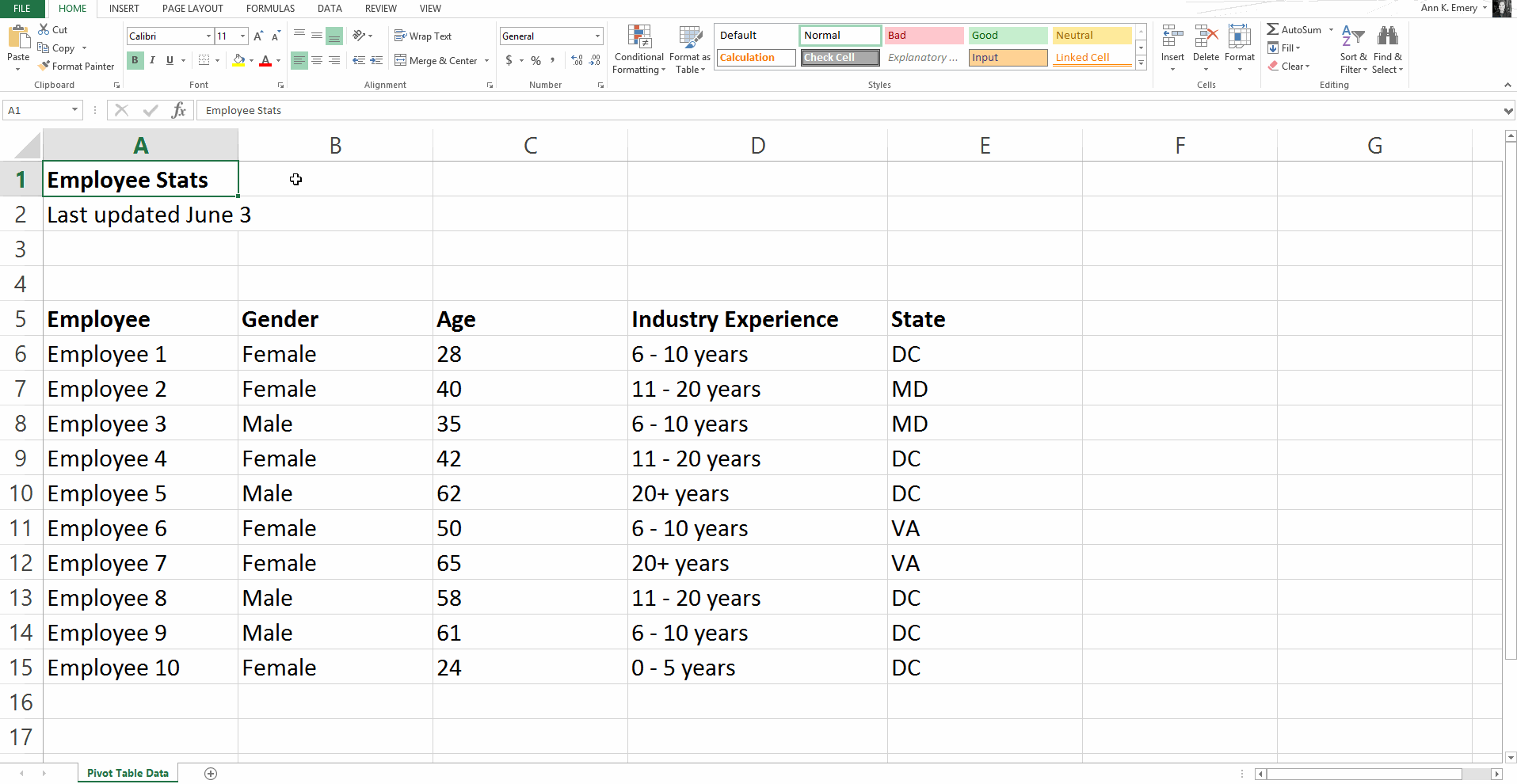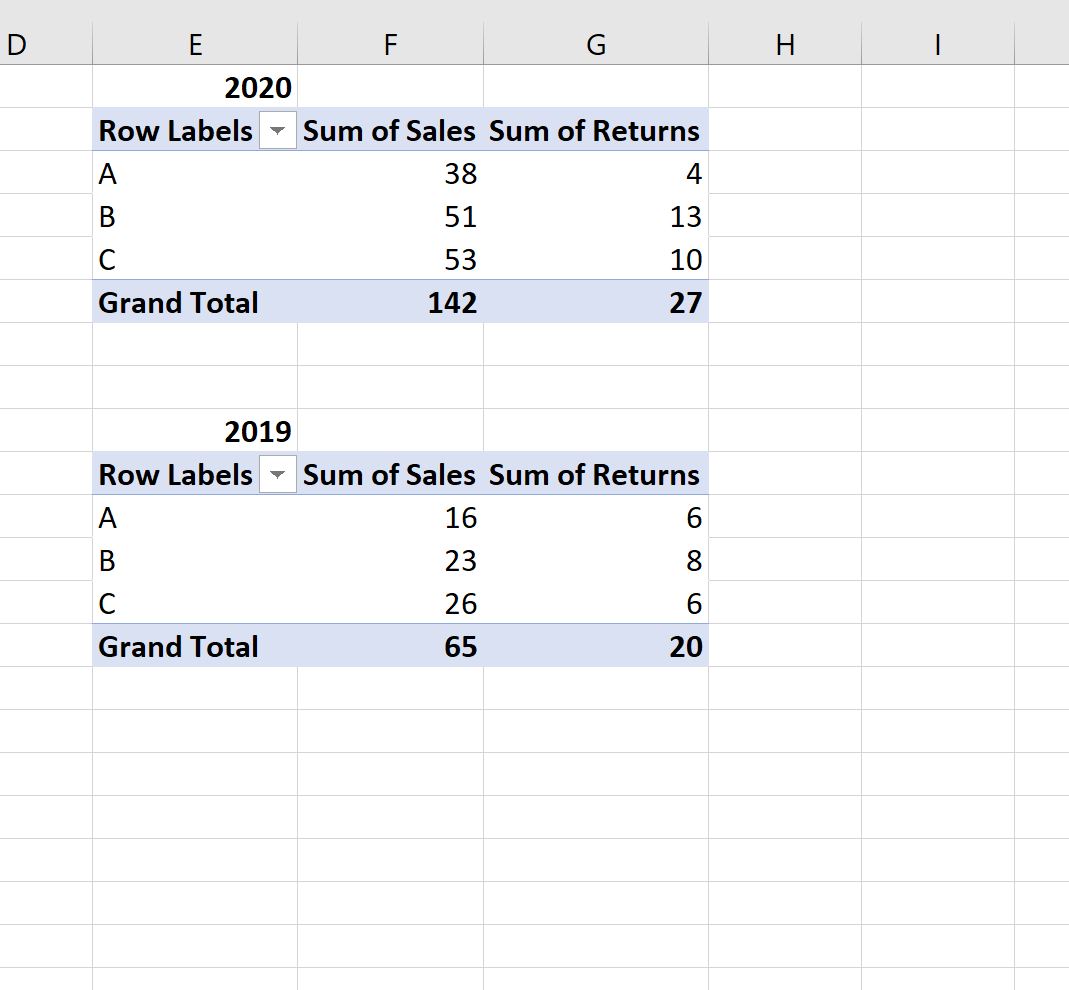How To Calculate Percentage In Excel Pivot Table
How To Calculate Percentage In Excel Pivot Table – Pivot tables are an excellent reporting tool built in Excel. While it’s typically used to summarize data with a total, you can also use it to calculate the percentage change between values. Even better: easy to make.
You can use this technique to do all kinds of things – almost anywhere you want to see how one value compares to another. In this article, we will use a simple example to calculate and display the percentage change in total sales amount from month to month.
How To Calculate Percentage In Excel Pivot Table

This is an example of a sales slip showing the order date, customer name, sales representative, total amount sold, and a few other things.
Simple Pivot Table
To do all of this, we will first format our range of values as a table in Excel and then create a pivot table to perform and display our percentage change calculations.

If the date range isn’t already formatted as a table, we recommend that you do so. Data stored in tables has many advantages over data in a range of worksheet cells, especially when using PivotTables (read more about the benefits of using tables).
Check if the range is correct, if you have headers in the first row of the range, then click “OK”.

Calculation Of Percentages In Pivot With Distinct Count
The range is now formatted as a table. Naming the table makes it easier to refer to in the future when creating pivot tables, charts, and formulas.
Click the “Design” tab under Table Tools and enter a name in the box provided at the start of the Ribbon. This table is named “Sales”.

The Create Pivot Table window will appear. It will automatically detect your table, but you can select which table or range you want to use for the current PivotTable.
How To Convert Numbers Into Percentages
We will then drag the date fields that we want to group into the pivot table rows area. In this example, the field is called Order Date.

If your version of Excel doesn’t do this, or you just want to change the grouping, right-click the cell containing the date value and select the “Group” command.
The current year and month are fields we can use for analysis. The month is still referred to as the Order Date.

How To Analyze Survey Data In Excel + Video
Move the Year field out of Rows and into the Filter area. This lets users filter the PivotTable for a year instead of cluttering up the PivotTable with too much information.
Drag the field that contains the value (Total Sales Value in this example) that you want to calculate and display the changes in the Values area twice.

The values in the first column we want to keep as the total. They still need formatting.
Sort & Filter Pivottable Data
Right-click the value in the second column, point to “Show Values,” and then click the “% Difference From” option.

Select “(Previous)” as the base item. That is, the current month’s value is always compared to the previous month’s value (Order Date column).
Click in the cell containing the Row Labels and type “Month” as the header for the column. Then click in the header cell for the second value column and type “Variance.”

Change How Pivot Table Data Is Sorted, Grouped, And More In Numbers On Ipad
To really polish up this pivot table, we want to visualize the percentage change by adding some green and red arrows.
This will give us a great way to see if the change is positive or negative.

Click a value in the second column, then click Home > Conditional Formatting > New Rule. In the Edit Formatting Rules window that opens, follow these steps:
How To Create A Contingency Table In Excel
Pivot tables are an amazing tool and one of the easiest ways to show percentage change over time for metrics.
How-To Geek is the place to go when you want an expert explaining technology. Since launching in 2006, our articles have been read more than 1 billion times. Do you want to know more? (I was able to do a screenshot by simply copying and pasting the values and then creating the % formula on line 61)
I’ve had a good look at the “Show values as” option, tried having two “Grand Totals” by making an inactive column in the underlying data titled “Grand Totals” and still not happy.

Add Calculated Field To Pivot Table
However, this solution is not very good because the number of rows in the pivot table will change in the future, then I’m afraid it will overlap.
Looks like there should be a solution in Excel, the idea is so simple! However, I haven’t been able to find it online despite several fruitless searches.

There is a drop-down menu next to the AutoSum symbol. Open the drop-down menu to select AVERAGE, COUNT, MAX or MIN
Calculate % Of Filtered Values From All Values In Excel Pivot Table
1.Drag a value field into the Values ”box” in the PivotTable field list. (So now you have duplicate values)

Thanks for the reply, sorry about the picture, I can’t see how to edit the link now to fix it… my fault.
So if I do what you suggest, I get this (pardon the awkwardly placed cursor assist image thing):

Percentages Of Increments In Pivot Tables With Cal…
I need to have the percentages as one line below the Grand Total line. i.e. showing for each employee (column) the total hours as a proportion of the total hours for the entire job (see first image in original post above).
I am not sure. I haven’t seen your picture, so I don’t know what the expected result would be.

Can you put it on a file sharing site and provide a hyperlink? Or did you try to put it inside the img tag?
How To Create A Pivotable Table To Capture The Attendance Percentages Of The Employees Using The Actual Clockings
We have a great community of people providing Excel help here, but the hosting fees are huge. You can help keep this site running by allowing ads on . It has columns for Type of book, Date of sale, Amount of sale, and Store where it was sold.

Before creating a pivot table, the data that you will work with (called source data) must be properly organized.
Each column contains the same type of data, such as text in one column and currency in another, and there can be no blank rows or columns.

Calculate Percent Of Total For Pivot Table
Click any cell in the data. Click INSERT and PivotTable. All data sources are selected automatically. In this example, the entire SourceData table.
We recommend using tables because if the table grows, the PivotTable will automatically include the new data when you refresh the PivotTable.

For information about creating tables, see the Create or delete an Excel table in a worksheet link in the course summary.
How To Create A Pivot Table In Google Sheets
If you want, you can create it on an existing worksheet by clicking Existing Worksheet and providing its location. Click OK. In our example, a new worksheet is created with an empty PivotTable.

At the bottom are four PivotTable areas; fields can be added to: ROW, COLUMN, VALUES and FILTER.
Check the Sales Amount column and add it as a value added column using the SUM function.

Working With A Calculated Field In An Excel Pivot Table
I don’t want any digits after the decimal, so I set the decimal to 0, click OK and we can see the total sales for the different book genres.
I clicked and dragged the Stores field to COLUMN and we can see the genre sales for each store along with the grand total.

One important factor that we still don’t have in PivotTables is data. How have sales differed over time?
Excel: How To Calculate The Difference Between Two Pivot Tables
I checked the Date field and it added to the ROWS area. But so many rows of data makes a PivotTable difficult to use.

I’ll be using the default, Monday, but you can choose one or more options, such as Quarter and Year. Click OK.
Data is grouped by genre per month, much easier to work with. And we can look at genre sales over time for each store.

How Do You Calculate Percentages And Average Salary
When you click any cell in the PivotTable, the PivotTable Field List and the PIVOTABLE TOOLS tab appear.
For example, click Report Layout, click View as Outline, and now Genre and Date are in separate columns. The relationship between the part and the whole can be seen directly in our daily work with the statistical value displayed in the form of a percentage.

Take this table as an example. We want to calculate the percentage of January sales against annual sales so we can apply the percentage format here.
Solved: Calculate Percentage Of Non Numerical Fields In Co
First, select cell D2 and enter the formula “=B2/C2”. Then use the fill handle to drag down and we can get each employee’s sales in January of this year.

Then we select cells D2-D15. Click the Number Format drop-down button on the Home tab and select More Number Formats. The hotkey is Ctrl+1. In the pop-up dialog box, click Percentage. Here we want to keep two decimal places, so enter 2 in decimal and click OK . Numbers are converted to percentages with two decimal places.
For advanced Office Excel, you can learn how to use Office Sheets online at Academy.

Pivot Table Template
Refresh PivotTables and Change Data Source 2.5K 01:28 Print Table 1.1K 02:43 Page Setup and Print Spreadsheet 1.8K 02:07 Set Table Header and Footer 1.5K 02:10 How to Select a Range of Multiple Contiguous Cells 3.4K 2 Ways change the background color
How do i calculate percentage in excel, formula to calculate percentage in excel, excel pivot table percentage of total, how to calculate percentage in pivot table, calculate percentage in excel, how do you calculate percentage in excel, how to calculate percentage in excel, how to calculate percentage increase in excel, excel pivot table calculate percentage, how to calculate percentage in pivot table excel 2007, how to calculate percentage in excel sheet, how to calculate trend percentage in excel

